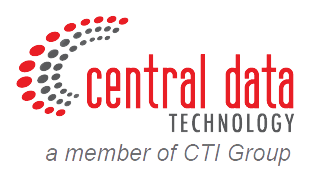
Managing 83 different security solutions from 29 vendors? For many modern organizations, this has become the norm. IBM research shows that tool sprawl is leaving businesses overwhelmed—driving up costs, fragmenting visibility, and complicating daily operations. Instead of delivering stronger protection, the growing stack of tools only weighs down IT teams, slows response times, and creates new security gaps.
The answer lies in monitoring consolidation. By bringing tools together into a single observability platform, organizations can cut through complexity, reduce costs, and respond faster.
Read on to learn how consolidation helps organizations overcome tool sprawl and unlock simpler, more effective operations.
What Is Monitoring Consolidation?
Monitoring consolidation is the practice of unifying monitoring data—covering logs, metrics, traces, and security—into a single integrated system. This creates consistent observability, removing the need for teams to jump between dashboards. With centralized visibility, analysis becomes more accurate, incident response is faster, and end-user experiences improve.
In fact, monitoring consolidation is part of a broader strategy known as tool consolidation.
What Is Tool Consolidation?
Tool consolidation is the strategy of merging overlapping IT tools—spanning monitoring, security, and infrastructure management—into a more efficient platform. By reducing the number of vendors and redundant licenses, organizations can lower costs, speed up troubleshooting, and free teams to focus on innovation and value creation rather than managing scattered tools.
Why Are Organizations Moving Toward Fewer Tools?
As IT and cloud environments expand, companies often add more tools for every new need—monitoring, security, management, and beyond. While this may feel effective at first, the stack quickly grows unmanageable. Tool sprawl drives up costs, makes integrations harder, and scatters insights across too many dashboards.
That’s why consolidation is becoming the logical move. With fewer tools, vendor management gets simpler, integration is smoother, and decisions are made faster. Unified platforms empower teams to work more efficiently and focus on creating real business value.
Common Problems Caused by Tool Sprawl
Tool sprawl isn’t just a cost issue—it fragments monitoring, scatters data, and distracts teams from what really matters. Instead of creating efficiency, it adds new layers of complexity that slow organizations down.
Here are the most common issues caused by tool sprawl:
- Excessive complexity: The more tools you add, the harder they are to manage.
- Disconnected integrations: Data remains siloed and difficult to unify.
- Data overload: Too much information without clear context.
- Slow troubleshooting: Finding root causes takes longer.
- Unmonitored assets: Parts of the infrastructure slip through the cracks.
The Key Benefits of Monitoring Consolidation
Monitoring consolidation goes beyond merging tools—it reshapes how IT team’s work. With a single observability interface, teams can see both the big picture and the finer details without juggling multiple dashboards. Here are the main benefits:
Higher Operational Efficiency
With all tools centralized, teams no longer waste time navigating multiple dashboards. Data is accessible in one place, speeding up monitoring and streamlining workflows.
Significant Cost Savings
Reducing the number of tools means cutting down on licenses, vendor contracts, and overhead. The savings can then be reinvested into more strategic business initiatives.
End-to-End Visibility
Logs, metrics, traces, and security data are no longer siloed. With consolidation, everything is presented in context, making analysis easier and response times faster.
Stronger Team Collaboration
When every team works from the same data in a single platform, communication improves. Misalignment is reduced, and everyone can move quickly toward the best course of action.
Key Features to Look for in a Unified Monitoring Platform
Not all monitoring platforms are created equal. When organizations consolidate tools, choosing the right platform is critical. The right choice should unify data, provide end-to-end visibility, enable smart automation, and scale with business needs.
Here are the features that matter most:
End-to-End Observability
The platform should monitor the entire IT ecosystem—applications, infrastructure, and security—in one interface. This ensures complete visibility and more accurate analysis.
Intelligent Alerting
Alert fatigue is a common issue. A strong platform filters noise and delivers only the alerts that matter, helping teams focus on critical issues.
Smooth Integration & Migration
The ability to connect with existing tools and support migration without downtime is essential. This ensures a seamless transition without disrupting operations.
Cost Optimization
Unified monitoring should also support financial efficiency. Built-in cost optimization helps organizations reduce licensing, resource usage, and infrastructure spending.
Automation & Scalability
A modern platform should automate routine processes and scale as the business grows. This ensures monitoring remains effective even as IT environments become more complex.
Best Practices for Monitoring Tool Consolidation
Consolidation isn’t about cutting tools blindly—it requires a clear strategy. Organizations should start with a full assessment: identify overlapping functions, prioritize tools that deliver real value, and build a structured migration roadmap. This ensures every step creates measurable benefits without disrupting ongoing operations.
It’s equally important to involve stakeholders early—across IT, security, and management. With clear communication and shared goals, the transition to a unified platform is smoother. The result is a more efficient, integrated monitoring environment that adapts to evolving business needs.
Monitoring Consolidation Solutions from Central Data Technology (CDT)
CDT is a trusted partner for organizations looking to break free from tool sprawl. With monitoring consolidation solutions built to unify data and streamline IT operations end-to-end, CDT empowers businesses to achieve higher efficiency, lower costs, and full visibility—all from a single platform.
Two key solutions CDT provides are:
Dynatrace Tool Consolidation
Dynatrace delivers unified observability as a single source of truth. Logs, metrics, traces, and security data are consolidated into one intelligent platform. This eliminates data silos, accelerates troubleshooting, and strengthens team collaboration.
NetGain Consolidation Solutions
NetGain Systems provides AI-powered observability that unifies infrastructure, applications, and security. Its strength lies in end-to-end visibility and automation, reducing the complexity of multiple disconnected tools. With NetGain Systems, organizations cut costs, improve reliability, and give teams the freedom to focus on innovation.
Read More: Unlock Smarter, Safer Networks with Powerful Network Configuration Management
Drive IT Efficiency in the Cloud Era with CDT
As part of CTI Group, Central Data Technology (CDT) is ready to be your trusted partner in tackling tool sprawl. With Dynatrace and NetGain Systems, CDT empowers businesses to achieve full visibility, reduce costs, and streamline operations in the cloud era.
From consultation and implementation to after-sales support, CDT guides every step of your consolidation journey to ensure smooth transitions and real results.
Get in touch with CDT now to start your journey toward more efficient, agile monitoring consolidation.
Author: Danurdhara Suluh Prasasta
CTI Group Content Writer

